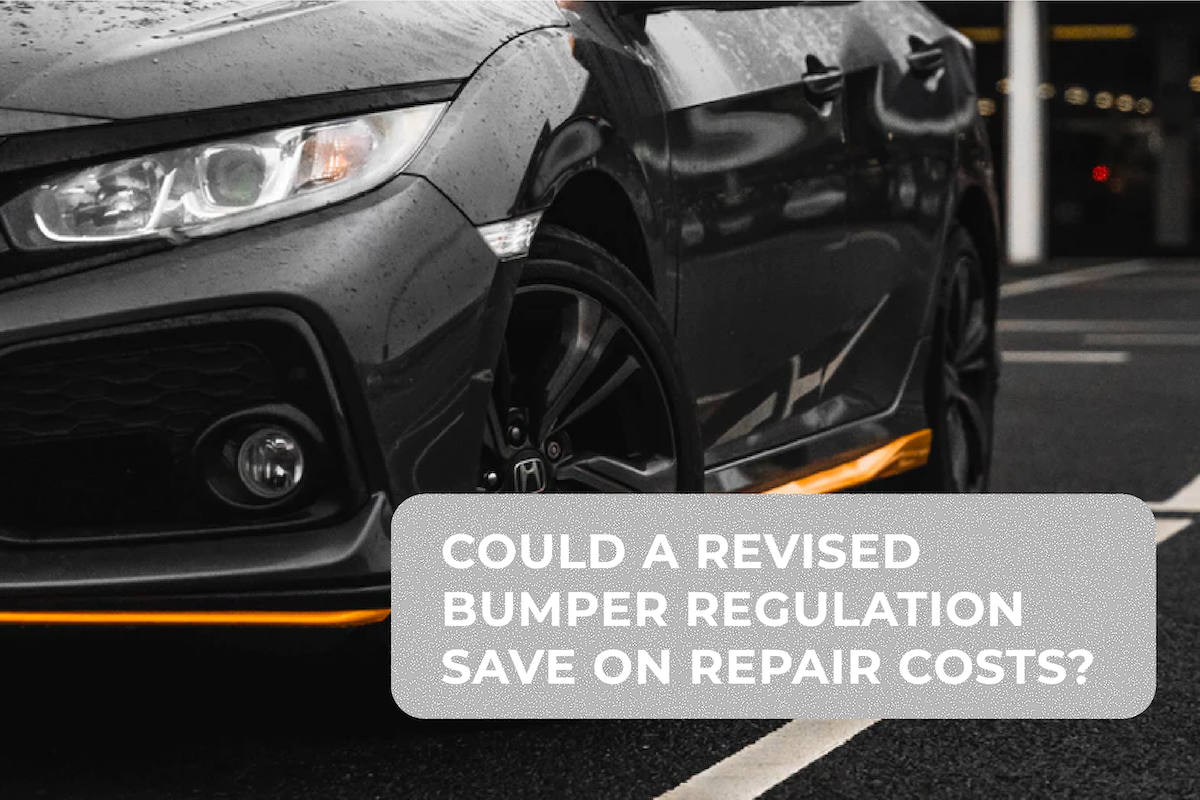Could a Revised Bumper Regulation Save on Repair Costs?

Hear me out on this: I am not a fan of more government regulations, but let’s take a look at new passenger cars and SUVs and their lack of bumper protection, and let me explain. Bumpers have evolved significantly since the U.S. government first implemented a Federal bumper impact regulation in September 1972. It was created to save vehicle owners money by reducing damage in low-speed collisions. The timing was unfortunate because it came into effect just as carmakers were manufacturing their 1973 models. The new standard prohibited functional damage to passenger cars for specified safety-related components such as headlamps and fuel system components when the vehicle is subjected to barrier crash tests at 5 miles per hour for the front and 2.5 mph for rear bumper systems. The standard did not apply to pickup trucks and SUVs. In order to meet the standard within a short development time, carmakers quickly devised an ungainly vinyl insert to cover the gap from the bodywork and two heavy shock absorbers for the front bumper.
The regulation was updated for 1974 model year vehicles, making the standard the same for front and rear bumpers. Most carmakers replicated their solution for the front bumper by pushing the rear bumper out from the bodywork and covering the shock absorber gap with body-color vinyl. This design added weight and detracted from the styling of the car. Thankfully, NHTSA amended the passenger car bumper standard in May 1982, halving the front and rear crash test speeds for 1983 to 2.5 miles per hour, and the corner crash test speed was lowered from 3 miles per hour to 1.5 miles per hour. This saved vital excess weight, as shock absorbers were replaced by brackets, and by this time many chrome bumpers had given way to the design we see today: a full plastic cover, a plastic or foam absorber, and the bumper bar bolted to the vehicle unibody.
But looking at today’s vehicles, one has to wonder if the regulation is still in effect. Although SUVs represent over 50% of vehicles purchased, they are still exempt from the standard, and a quick look at 2021 model SUVs shows many expensive head and tail lamps in unprotected bumpers. Many passenger cars too, while still technically meeting the standard, have grilles that extend from the hood edge to the underside of the car, with no bumper protection; dramatic styling that offers little protection and leads to some expensive parking lot accidents.
The Insurance Institute for Highway Safety (IIHS) in its bumper tests over the years has documented the increasing costs of low-speed bumper impacts, but vehicle manufacturers don’t seem compelled to change. The average new vehicle buyer, who rarely believes they will ever have an accident, doesn’t take notice either until they have a low-speed collision and are shocked at the repair costs, and potential rate increase after filing a claim.
Is there a need for a revised bumper regulation that would offer vehicle owners a lower cost of ownership because of increased protection in low-speed collisions? Carmakers may point to ADAS equipment as the answer, but I look at so many cars and SUVs with large unprotected grilles and wonder if a revised regulation could be the right thing.

Greg Horn
Greg Horn is PartsTrader’s
Chief Innovation Officer.
